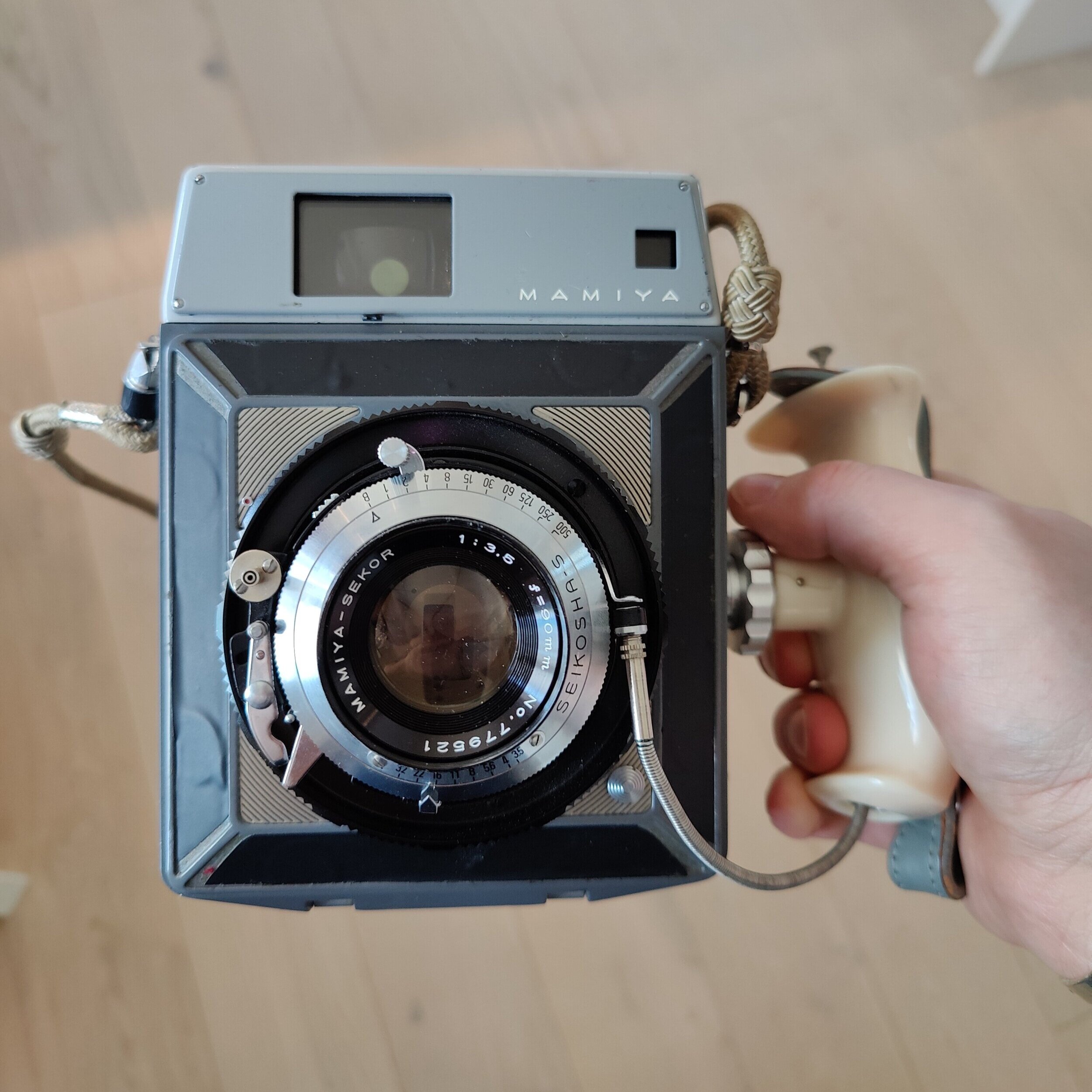There is a flea market here in my home town that I check almost on a weekly basis, because I have found surprising camera gear there several times. This time I came across a Mamiya Press. A bit funny since I pretty recently got my first Mamiya (the Mamiya 6) and now I have two.
The Mamiya Press was introduced in 1960, a range of medium format rangefinders with various lenses and backs. It is called a press camera because it was meant for.. photographers working in press. So magazines basically (newspapers already used 35mm). The magazine photographers previously used 4x5 and this was a much smaller and more portable camera. With a roll film back you got a 6x9 negative, which was large enough now that film emulsions had gotten much better. At the end of the 1950s both negative and positive color films made big leaps in terms of sharpness and quality and the need for the big sheet film sizes started to reduce.
By todays standards, the Mamiya Press is clunky, cumbersome, difficult to operate and barely fits any camera bag. It’s not a bad camera by any means, but it is very clear that the design stems from a different era.
Small stuff like the huge handle, no shutter button (shutter is operated by a release cable that you can attach to the handle. Almost no plastic is used so it is very heavy too.
Anywho - so I found the camera very cheaply, bought it and got a bag full of gear. The camera, the kit 90mm lens, the handle, two 120 6x9 film backs, the ground glass addon and a couple of sheet film holders (6.5×9 cm). I haven’t tried sheet film yet, only the roll films backs.
Loading the film back was a bit tricky. First off, the film goes from right to left. Make sure the two triangles on the knob are aligned. Do NOT engage the switch on the knob. If you do, you have to turn it all the way around which takes a long time. Load film, turn the knob until the arrow on the paper and the back align. Do not press paper down, just eyeball it. Close the back, and NOW engage the switch. If you don’t engage the switch and start turning the knob you have to start all over. Open the film back in a dark bag and roll back the film. I have done all these mistakes!
Second issue to note, the lens is retractable. It is barely noticeable, but you can twist the lens and push it in to save you about a centimeter of less space. If you however have the lens retracted, all of your shots will be very blurry. I have made this mistake!
Third issue to note. Remove the dark slide before you start shooting. No need to put it back in until you have finished the roll. I have made this mistake too!
Fourth issue. There is nothing to prevent you from accidental double exposures. Every time you take a shot, get into the habit of advancing the film at once. Engage the switch and turn the knob until it won’t turn more. You guessed it, I did some double exposures.
Fifth issue. Remove lens cap before shooting. Because it is a rangefinder you won’t notice that it is on. This one I have not done yet.
As you see, there is very little in this camera to prevent you from mistake. Very unlike the Mamiya 6 that has an extreme amount of interlocks.
Even though I sound very negative, it is a nice camera anyway. It has historical significance, it reminds us of a different time and forces you to be more careful, meticulously perhaps. And a 6x9 negative is pretty huge. The lens is old, but very sharp anyway. So you will get very sharp images with a Mamiya Press.
At first I was convinced I would sell this camera as soon as I wrote a review, but now I am actually thinking that this maybe has a place in my camera collection. Not for every day use, but something to pull out a few times a year. If you are a beginner or someone looking for your first medium format camera, I do however not recommend a Mamiya Press. Get something easier to work with, something more modern.
Here are a couple of example shots. Some exipred Tri-X developed in Xtol 1+1.
That’s it for this time. Write a comment if you want to know something else about the Mamiya Press. And please check out the shop for some zines and stuff!




